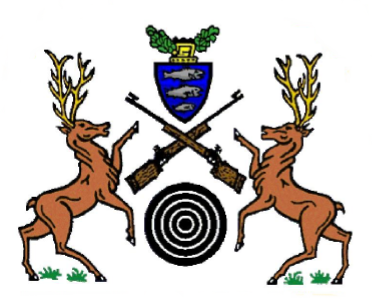Ranges - Rifle : 25 Yard Indoor
A multi purpose standing, kneeling and prone smallbore range with 14 firing points.
This is shot with purpose built 0.22” rimfire calibre Match rifles; these are larger than 0.22” sporting rifles or air-rifles, and are more accurate. Traditional models have a wooden stock, but newer models have an aluminium skeleton stock. Most rifles are bolt-actions (Anschütz, Feinwerkbau, and Walther are leading brands), but some are Martini lever-actions (notably BSA); both types are single shot – loaded one bullet at a time. Most are aimed with telescopic sights although rifles set up for Prone rifle shooting using aperture sights can also be used.
The NSRA rules which state shooters fire from a bench in a sitting position the front of the stock on a rest but with the rifle butt located in the shoulder and the stock supported by the shooters hands.
Benchrest is shot indoors from a distance of 20 yds. Each paper target has ten aiming spots which are divided into concentric scoring rings, the smallest of which (the bullseye) counts as 10 points.
One shot is fired at each spot for a maximum score of 100 points. Bullet holes and scoring rings are not visible to the naked eye but are visible through the telescopic sights so shooters can see their shots.
Smallbore Benchrest is also shot at 50 metres and 100 yards on some outdoor ranges. Here larger targets with larger scoring rings are used. When shooting outdoors one must compensate for the effects of crosswinds on their shots for an extra challenge !
This is shot with purpose built 0.22” rimfire calibre Match rifles; these are larger than 0.22” sporting rifles or air-rifles, and are more accurate.
Traditional models have a wooden stock, but newer models have an aluminium skeleton stock. Most rifles are bolt-actions (Anschütz, Feinwerkbau, and Walther are leading brands), but some are Martini lever-actions (notably BSA); both types are single shot – loaded one bullet at a time.
All are aimed with aperture sights, small peepholes mounted at either end of the barrel. The rearsight can be adjusted to centre one’s shots on the target.
Shooters fire from the prone position; this means lying on their front, propped up on the elbows, and resting the rifle on their hands. To help support the body and to steady the rifle when aiming, a padded jacket (of stiff canvas or leather) is worn, along with a shooting sling (a plastic or leather belt joining left arm and rifle). A padded glove cushions the left hand. The prone position is naturally very stable, and so aiming can be very accurate.
Smallbore prone is shot indoors from a distance of 25 yds. Each paper target has ten aiming spots which are divided into concentric scoring rings, the smallest of which (the bullseye) counts as 10 points.
One shot is fired at each spot for a maximum score of 100 points. Bullet holes and scoring rings are not visible to the naked eye, so shooters have a telescope to see their shots. Smallbore prone is also shot at 50 metres and 100 yards on outdoor ranges. Here larger targets with larger scoring rings are used. When shooting outdoors one must compensate for the effects of crosswinds on their shots for an extra challenge !
